
 Now that the world’s markets are all aquiver once again about the Eurozone debt and the spectre of the debt issues facing Ireland, Spain and Italy are making the front pages of the world’s newspapers, I thought I’d take a brief look at the last of the PIIGS nations – Spain.
Now that the world’s markets are all aquiver once again about the Eurozone debt and the spectre of the debt issues facing Ireland, Spain and Italy are making the front pages of the world’s newspapers, I thought I’d take a brief look at the last of the PIIGS nations – Spain.By way of introduction, Spain is Europe’s third largest nation in area and had a population of 47,150,800 citizens at the beginning of 2011. Spain’s main exports include motor vehicles, foodstuffs, pharmaceuticals and machinery. According to the IEA, Spain produced only 2500 BOPD in 2010 necessitating the import of 1.438 million BOPD, making the country highly susceptible to oil price changes. Spain’s Consumer Price Index was up 3.5 percent on a year-over-year basis reflecting higher energy costs.
In the first quarter of 2011, Spain’s Gross Domestic Product
grew by a tepid 0.8 percent on a year-over-year basis to €270.620 million and by 0.3 percent on a quarter-over-quarter basis. Here is a graph showing Spain’s GDP growth history since 2004 when compared to the other Eurozone nations:GDP is projected to grow by a rather lukewarm 1.5 percent in 2011 and 2012 after seven quarters of negative growth.
Employment dropped by 1.4 percent in the first quarter of 2011 showing a net job loss of 240,000 over one year. Hardest hit were jobs in the construction sector where the number of jobs dropped by 8.7 percent on a year-over-year basis. In the first quarter of 2011, Spain had 23,062,000 economically active persons, unfortunately, unemployment in Spain is rather high compared to the United States with 21.29 percent unemployment on average in Q1 2011, up from 20.05 percent in Q1 2010. Overall, the under-25 unemployment rate in Spain hit 44.4 percent compared to an average of 20 percent in the EA17 and 20.4 percent in the EU27 with unemployment among Spain’s 25 to 29 year olds reaching an average of 27.24 percent in Q1 2011. Here is a graph from the Eurostat website showing that Spain’s total unemployment rate for the month of May 2011 is the worst in the Eurozone by a wide margin and is over twice the average of either the EA17 or EU 27 nations:
Note that Spain’s unemployment is much higher than Italy’s (8.1 percent), Ireland’s (14 percent) or that of Greece (15 percent). Unemployment is definitely not projected to decrease by much during 2012 either with a forecast decline to only 20.2 percent.
Since we’re constantly being fed propaganda by our governments that insists that low corporate tax rates are good for employment among other things, Spain’s corporate tax rateis 30 percent, down 5 percentage points from 2000 and is 4.3 percentage points above the EA16 average but well below nations like France (34.4 percent), Belgium (34 percent) and Malta (35 percent). France’s unemployment rate is 9.5 percent, Belgium’s is 7.3 percent and Malta’s is 6.2 percent. I’d say that the relationship between low corporate taxes and low unemployment is tenuous at best.
Spain’s National Institute of Statistics also releases monthly data showing the number and value of mortgages constituted for each month of the year. During the month of April 2011, the average value of mortgages decreased 12.1 percent on a year-over-year basis and was 4.9 percent lower than the month before. The value of mortgages on all urban dwellings in Spain stood at €5,329 million, down 44.7 percent on a year-over-year basis. The total number of mortgaged properties dropped to 50,089, down 37.5 percent from a year earlier. In large part, this is evidence of the issue facing Spain. According to ScotiaCapital’s Global Real Estate Report for June 2011, Spain’s housing prices were down 8.5 percent in Q1 2011 on a year-over-year basis, following a drop of 5.4 percent in 2010, 7.3 percent in 2009 and 3.9 percent in 2009. This followed the bubble years of 2002 (up 13.4 percent), 2003 (up 16.9 percent), 2004 (up 15.3 percent) and 2006 (up 11.2 percent). Prices increased an amazing 21.4 percent on a year-over-year basis in October of 2003 alone. All increases are inflation adjusted. Here is a graph showing the growth rate of Spain’s housing prices in red and the price index in black:
The same chart can be perused in its interactive form at this link.
Here is another chart from the ScotiaCapital Global Real Estate Report comparing the inflation and deflation of the housing price bubble in Spain, Italy and France showing that Spain’s housing bubble was the most extreme of the three nations:
On to Spain’s debt picture.
Here is a screenshot showing the outstanding nominal debt for Spain current to the month of May 2011 from the Public Treasury website:
The country’s debt totals €566.0 million ($809 million USD) up from €496.2 million ($709.6 million) one year earlier. This is a 14 percent year-over-year increase. The average maturity for Spain’s sovereign debt is 6.69 years, markedly up from 2.72 years way back in 1987. According to the European Commissions Economic and Financial Affairs 2011 Spring Forecast for Spain, Spain’s debt-to-GDP ratio is expected to increase from 60.1 percent of GDP at the end of 2010 to 71 percent of GDP in 2012 as shown in this graph (and pardon me if it’s too small to read – if so, please click on the preceding link):
According to the IMF’s 2011 Consultation Concluding Statement for Spain, the country’s deficit fell from 11.1 percent of GDP in 2009 to 9.2 percent of GDP in 2010 as a result of measures adopted by the government in mid-2010. The 2011 deficit-to-GDP target has been set at 6 percent of GDP and the IMF expects that this target will be reached provided that Spain’s regional governments meet their own targets. While this drop in Spain’s deficit is notable, it is still well above the Eurozone’s target deficit-to-GDP level of 3 percent. It’s not as though Spain is alone in this breach of protocol, 9 out of 17 EA nations are now breaching the EU target. Much of the drop in deficit spending will be on the back of increased VAT and excise duties; Spain raised its VAT from 16 to 18 percent effective July 1, 2010. Should the world’s economy falter over the remainder of this year, all bets are off and Spain’s deficit- and debt-to GDP numbers could remain at an elevated level for the foreseeable future.
The IMF also notes that unemployment is stubbornly high and is well above the Eurozone average. They are concerned that high unemployment could create domestic economic headwinds that will result in additional downward pressure on the already decimated housing market and slower banking sector balance sheet repairs that were damaged by the decline in the housing market. As well, the IMF notes that as financial conditions in the Eurozone deteriorate, a drop in sovereign bond prices as a result of the perceived increase in the risk of default could push interest rates higher, affecting the ability of Spain to control the decline in its deficits.
While Spain’s debt-to-GDP ratio has not reached the stratospheric levels of Greece and Italy, the country clearly has issues with the continuing drop in real estate prices and incredibly high unemployment rates, particularly among those who are under the age of 25. This will definitely crimp the growth potential of Spain’s economy. As well, to me, it seems rather interesting that the unrest in Egypt was, in large part, related to high levels of youth unemployment. Will history repeat itself if Spain’s government is forced by those who will bail it out (i.e. IMF, ECB) to impose an austerity program on its citizens?
Click HERE to read more of Glen Asher’s columns.
Article viewed at: Oye! Times at www.oyetimes.com.
You can publish this article on your website as long as you provide a link back to this page.

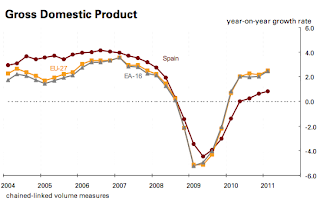
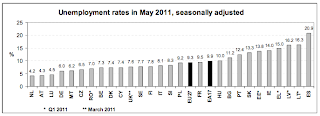
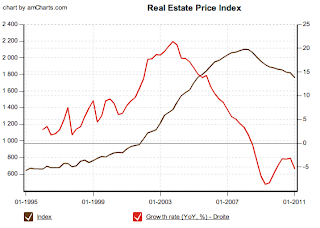
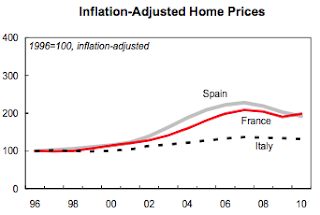
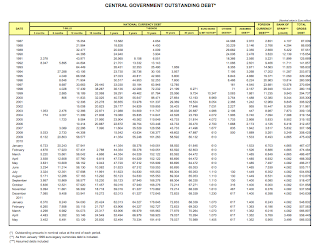
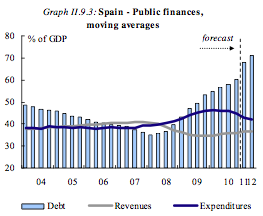
Be the first to comment